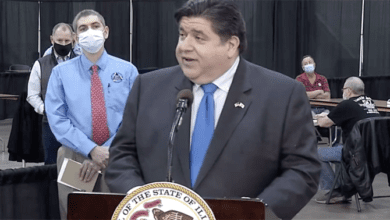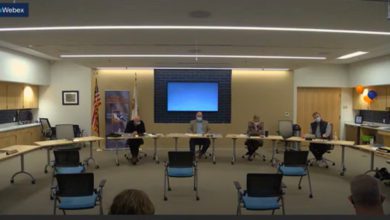Super Blood Wolf Moon Jan. 20, viewing at Staerkel Planetarium
A Super Blood Wolf Moon sounds extraordinary.
And because lunar eclipses coinciding with a super moon are rare, it is extraordinary.
But what does it all mean?
Witnessing a “super moon” is common. This is when the full or new moon is closest to the Earth in its orbit, appearing larger and brighter than normal.
Native Americans and Anglo Saxons named the January full moon the “wolf moon” because of the howling from wolves as they fought hunger in the winter months.
But something that is less common is the “super blood moon.”
According to Parkland College’s Staerkel Planetarium, “A total lunar eclipse occurs when the Full Moon passes through Earth’s shadow. Given the Moon’s orbit is five degrees off Earth’s orbital plan, most full moons miss Earth’s shadow.
“The darkest part of Earth’s shadow will encroach upon the Moon at 9:34 p.m. CST. The Moon will be completely in shadow by 10:41 p.m. and will remain there for about an hour. The Moon will begin to emerge from the shadow at 11:44 p.m., leaving a Full Moon in the sky again by 12:51 a.m. Monday.
“At mid-eclipse (11:12 p.m.), the Moon may take on a reddish hue, often referred to as a “blood Moon”. The sight has nothing to do with blood, however. It occurs because sunlight, bending through Earth’s atmosphere, often hits the Moon; the atmosphere then scatters some of the blue part of the spectrum (what brings our blue skies), leaving this reddish light.
Dark skies are not needed to see a lunar eclipse, and unlike their solar counterparts, they are very safe to watch.”
The last super blood moon was in September of 2015.The next total lunar eclipse will take place on May 26, 2021.
Staerkel Planetarium will join the CU Astronomical Society in making telescopes available to the public for the Sunday, Jan. 20 eclipse starting at 9 p.m., weather-permitting.
This lunar viewing is not a planetarium show; it will be held outside. CUAS members will be outside the planetarium beginning at 9 p.m. observing the eclipse.
Call the planetarium at 217/351-2567 for updates to the viewing if the weather seems uncertain.





